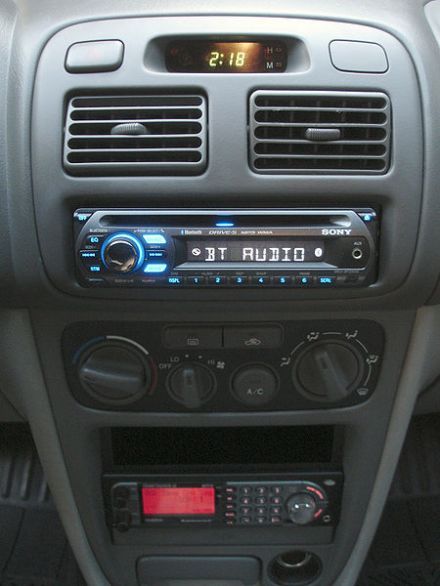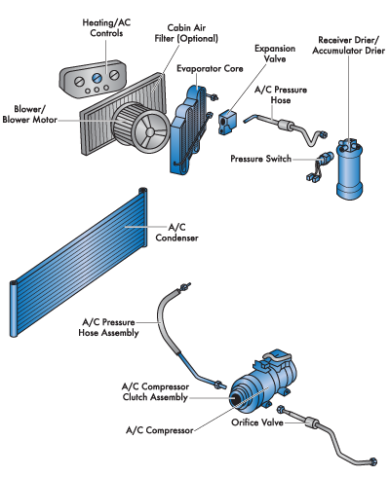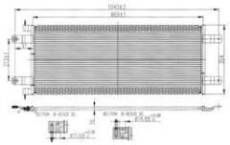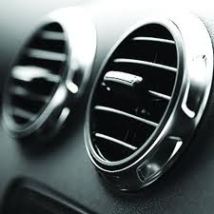Lately I’ve noticed the hot car on our lot is the Toyota RAV 4. We have been selling them faster than we get them in. Could it be its fuel economy of 22/28 and it’s an SUV?
The RAV4 began sales in North America in 1996 and was designed for consumers wanting the benefits of an SUV such as increased cargo, room, higher visibility and the option of four wheel drive and better fuel economy. The name stands for “Recreational Active Vehicle with 4-wheel drive”, although not all RAV4s have four-wheel drive, this is an option.
Based on the Corolla platform, and being offered in both two and four doors, the vehicle was available in both front-wheel drive and all-wheel drive as well as either a five-speed manual or four-speed automatic transmission. In 1997, it was named Automobile of the Year by Automobile Magazine. In 1998, Toyota decided to restyle a bit and added a soft-top two door model. Then in 1999, the two-door hardtop was dropped, leaving just the 4-door and soft-top models.
RAV4 EV
And believe it or not, there was an all-electric variant of the RAV4. This was produced from 1997-2003 for fleet lease. This zero emission model was only offered to the public for sale for seven months in 2002, in very small quantities in California. So you might see one on the road someday, but they are few and far between. They are powered by a NiMH battery pack that can store 27kW h and can go up to 190km between charges. A total of 1,484 units were leased and/or sold in California and as of mid-2012, there were almost 500 units still in use.
In the middle of 2000, two models went on sale – the base Edge and upmarket Cruiser both in 3 and 5 door configurations. The Edge model had unpainted bumpers and moldings, mirrors and door handles, and featured steel rims. The Cruiser model gained body-coloured or painted bumpers and moldings, mirrors and door handles, alloy wheels and ABS brakes. Both models had a brand new 2.0 L 4-cylinder engine with improved power and torque as well as fuel consumption. All-wheel drive was a feature and options available were ABS (on the Edge) and air conditioning on all models.
The second generation RAV4 was offered in a number of trim levels. The generation also continued on the Corolla platform, but the American model was now only available in a four-door configuration. If you happen to look for a used RAV4 of this era, you can find options such as anti-lock braking system, electronic stability control, a/c, height adjustable driver’s seat, cruise control, six speaker CD stereo, power windows, mirrors, and seats. If you add the sports package, you would expect options of a mesh grille, hood scoop, color-keyed door handles, a roof rack, silver sport pedals, heated mirrors, gray painted bumpers and fender flares and sport fabric seats.
There was a styling update in late 2003 for the 2004 model RAV4s. This improved the equipment and in some markets, a new engine. Here in the United States, the safety structure was improved and Vehicle Stability Control was made standard. The 2.0L engine was no more and upgraded to the new 2.4L engine and fuel economy was improved by over 2%. The base Edge was renamed to the CV and air conditioning became standard in the vehicle. It also received painted bumpers in either silver or body-coloured shades, depending on the body colour. It also gained a subtle facelift, mostly consisting of a new front bumper with circular fog lights and white turn signals instead of the orange lights.
In 2005, Toyota added a “CV Sport” model to the lineup, which added a non-functional hood scoop, giving the RAV a more aggressive appearance. The model was short lived, about a year and was only introduced to help sales until the newer model arrived in early 2006.
Third generation 2005-2012
The Toyota RAV4 received a complete makeover for 2006, using an all-new platform. The new RAV4 uses an Electric Power Steering (EPS) system.
It is also the first generation of RAV4 to be offered in regular and extended versions. The extended-length RAV4 is larger by 21% in interior volume from the last generation and now has an available third-row seat for two small children. It is still available in either front-wheel or all-wheel drive in the United States.
In 2008, for the 2009 models, the RAV was given a refresh. It featured a number of changes, including an all-new 4 cylinder engine, redesigned front and rear end, Limited received a different front grille and bumper cover, Sport received a bigger spoiler and red badging along with an option on the V6 to have a rear door instead of the mounted spare tire. There were new features/options that included turn signals on mirrors, backup camera, satellite navigation, smart keyless entry, push button starter, etc. Most of the interior remained the same.
Fourth generation 2012-TBD
The fourth generation Toyota RAV4 will be in production in the third quarter of 2012. The new RAV4 will be based on the Camry platform.
Now that you know a little history of the vehicle, if you are interested in reviews or the specifications, check out Consumer Reports. They are a great resource and if you would like to test drive one or have any questions about anything else, give us a call.
Moores Automotive
1246 Hartford Turnpike
Vernon, CT 06066
Phone: (860) 872-2024
www.mooresautomotive.com








